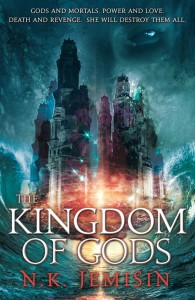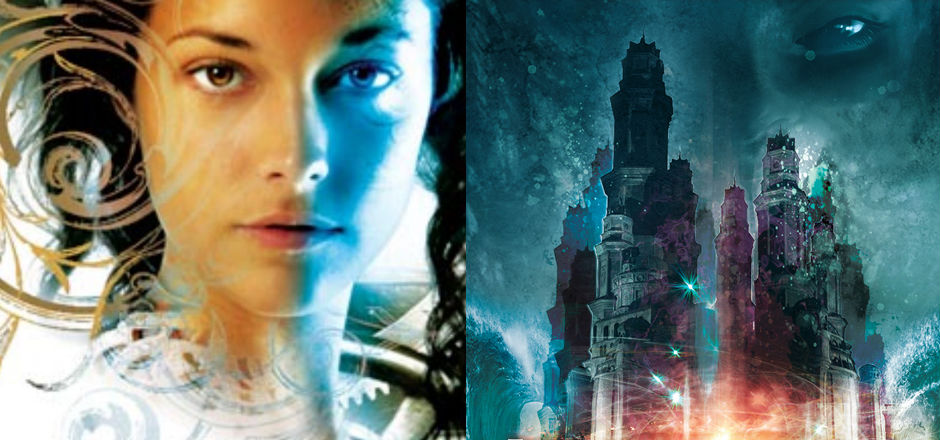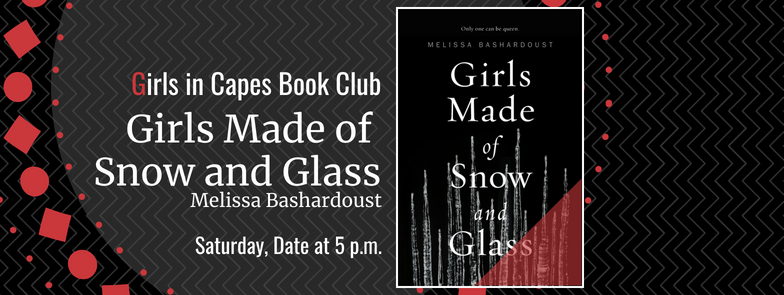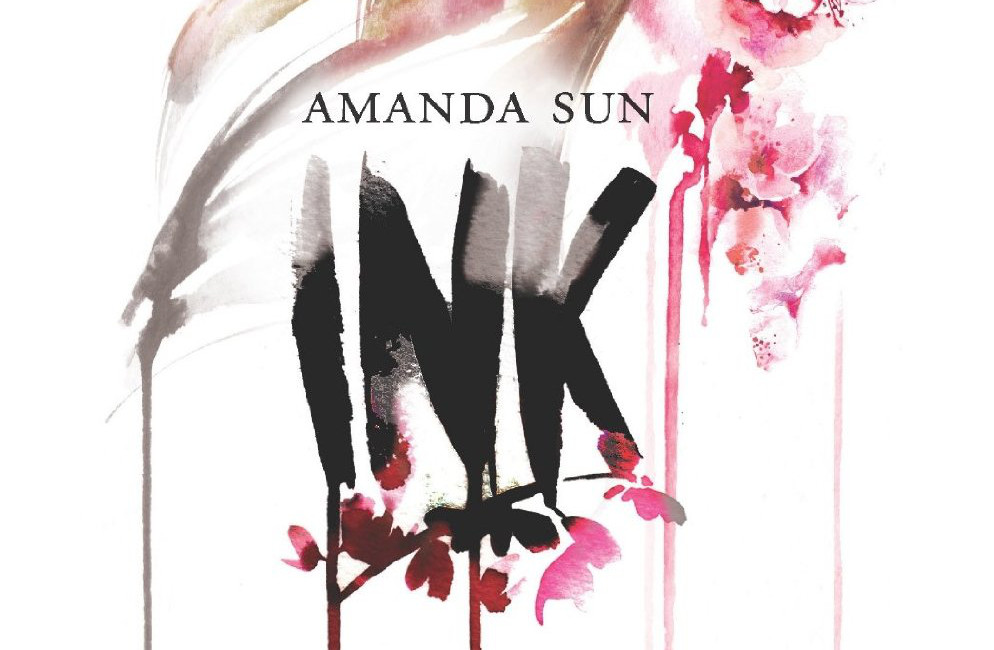[dropcaps]J[/dropcaps]uly is The Multiracial Issue, and in wake of the #WeNeedDiverseBooks events and discussion, Girls in Capes invites guests to share five diverse books in different genres with our readers. Today, Ariel Kroon and K. D. Callaghan of Paper Droids share five diverse fantasy novels to add to your TBR pile.
Fantasy is a troubled genre for troubled times, picking and choosing through historical periods to draw out utopias from the past. True to the name, however, these utopias are places that just don’t exist – never did, and never will. They’re imaginary places not only due to dragons, but because of the fact that these apparently perfect worlds cannot hold marginalized folks, save for a few token characters to reinforce established norms and prejudices.
Not cool, fantasy writers. Not cool. We at Paper Droids have had our eyes on you for a while now, and we know that #WeNeedDiverseBooks that represent all different voices, at different times in different places, so that in this time and in this place we are capable of freeing our imaginations. So without further ado, here’s Paper Droids’ list of recommended diverse fantasy novels, compiled by outgoing editor Ariel Kroon and incoming editor K.D. Callaghan:
1. Odori, a Novel by Darcy Tamayose
Odori means “dance” in Japanese, and that is what this novel is – a graceful dance between history and reality, weaving through legend and family and breathing the sorrows and joys of diaspora. Mai Yoshimoto-Lanier, a third generation Canadian who is plunged into a coma when her husband’s old Ford goes off the bridge in Rainmaker Alberta, encounters the ghost of her basan in a dreamscape between heaven and earth. Her grandmother, an Okinawan storyteller, weaves poetry through the strands of history, telling the story of Mai’s mother and aunt in an almost-elegy. Beautiful imagery of Hamahiga in 1920s mingles with fabulations of the gods of the ancient Ryukyuan kingdom that became Okinawa, set in contrast with the horror and sorrow of World War Two and the weight of loss. Basically it’s amazing, go read it.
2. Darkest Light, by Hiromi Goto
I’ll say right off the bat that this YA novel is a sequel and yes, it is The Winter Soldier to Half World’s Captain America. Goto set the stage in Half World with a beautifully crafted, horrific realm between Life and Death, accessed from under a bridge in Vancouver, and DL takes this setting and runs with it. Gee, our protagonist, was actually Half World’s Big Bad, defeated by Melanie Tamaki in the last book and now a cranky, loser teenager with no memory of the place he once ruled. Darkest Light tackles the question of life after death straight on – and splinters it into dozens of other questions, becoming a bildungsroman set in a hellscape that is half Pan’s Labyrinth, half Asian religious and philosophical traditions. I have to warn you not to read it while eating because Goto’s brilliant, vivid descriptions of the awful denizens of the Half World and their doings are not for the faint-hearted or weak of stomach.
 3. The Kingdom of Gods by N. K. Jemisin
3. The Kingdom of Gods by N. K. Jemisin
If I had to choose an all-time favourite book, this would be it. Third in The Inheritance Trilogy, The Kingdom of Gods follows the trickster child god Sieh as he mysteriously starts to age—and is unable to return to his usual childlike form. In a world struggling in the aftermath of The Hundred Thousand Kingdoms, the Arameri fight to stay in control of the world as gods not seen for hundreds of years start to return. But in the absence of their former might, the entire world, held under their thumb for so long, is revolting, and with gods walking the streets of men again a new threat is starting to emerge. Sieh’s bond with twin Arameri heirs Shahar and Dekarta is one of the few things that sustains him as the world falls under a threat that only he can stop—and that he can barely remember. While the race and gender and sexual diversity of this book is brilliant, Sieh is ultimately what captured my heart, because his voice and narration is just so wonderfully fun and yet also heartbreaking. Be warned: Jemisin is a master of the bittersweet ending.
4. Kinslayer by Jay Kristoff
Another book with a bittersweet ending, Jay Kristoff’s Japanese-steampunk-fantasy, Kinslayer, the second book in his Lotus War series, is a masterpiece. Expertly plotted, Kinslayer builds on the society established in Stormdancer and expands outwards, building the tension between the Kage revolution and the Guild, who are slowly killing the island of Shima with their lotus production. While the guild have managed to sink their claws into the new Daiymo, the Stormdancer Yukio and her griffin Buruu set north to find some help, and maybe some answers. In doing so, Kristoff brings in white characters for the first time as more than an abstract concept, and shows us white people from Yukiko’s point of view. While the series is worth reading for this reversal and inversion alone, because it presents race relations in the complete opposite manner from what we’re used to seeing, it’s also got beautiful descriptions, epic fight scenes, wonderful characterization, and an intricately complex society inspired by feudal Japan.
 5. The Spiritwalker Trilogy by Kate Elliott
5. The Spiritwalker Trilogy by Kate Elliott
Okay, so this is a bit of a cheat because it’s three books (Cold Magic, Cold Fire, and Cold Steel), but it’s an alternate-history steampunk-infused fantasy trilogy that is absolutely brilliant. Betrayed by her family and sold into an arranged marriage with an arrogant cold mage, Cat Barahal and her cousin Bee flee for their lives, getting caught up in rebellion, wars, international espionage, and spirit forces beyond their control. Not to mention the war between the fey courts and the dragons. Set in an alternate version of Victorian Europe where the last ice age never ended, the cast is wonderfully diverse, with multiple representations of different kinds of female strength, and fantastic depictions of sexuality (including the first mention of asexuality that I can remember seeing in a novel). Elliott resists the usual whitewashing of the “historically accurate” medieval European fantasy setting for one that is far more accurate, showing the complex interplay of race and class throughout the entire series. Basically, if you’re sick and tired of European-based fantasy books that only feature white people, read these.
Ariel Kroon was the Art and Literature section editor for Paper Droids for over two years. She is now doing her Masters in English Literature at Wilfrid Laurier University in Waterloo, Canada, and reading all the sci-fi she can get her hands on.
K. D. Callaghan has finished all of her schooling (huzzah!) and has been writing for Paper Droids for almost two years now. She’s been Ariel’s lackey for the past year and has a particular weakness for trilogies.
Be sure to check out Paper Droids’ Gender Issues series for weekly reviews of representation in comics, and Art and Lit for more discussion on diversity issues such as #readmorewomen2014 and how Twitter activism can change the literary landscape. We’ve also got some more thoughts on #WeNeedDiverseBooks, sexuality, gender, and more diverse book recs!







I would add Otherbound to this list!